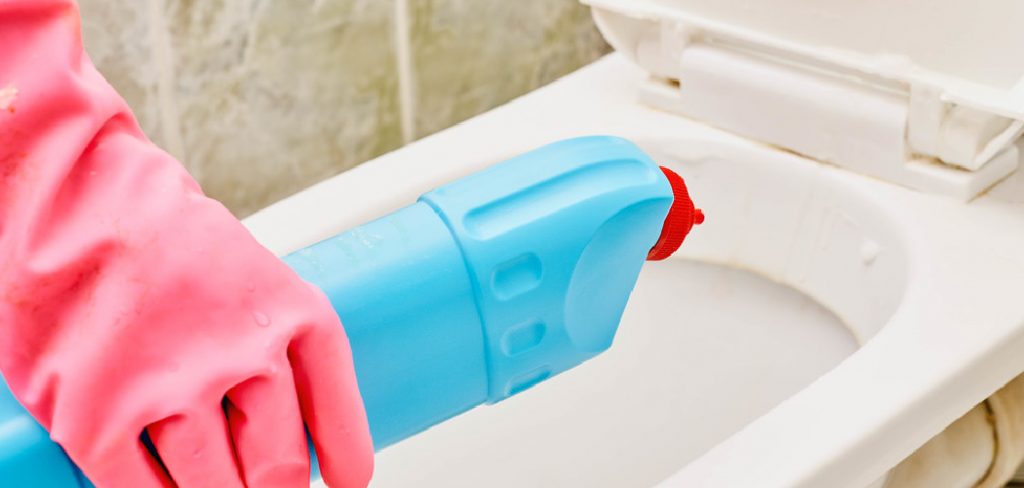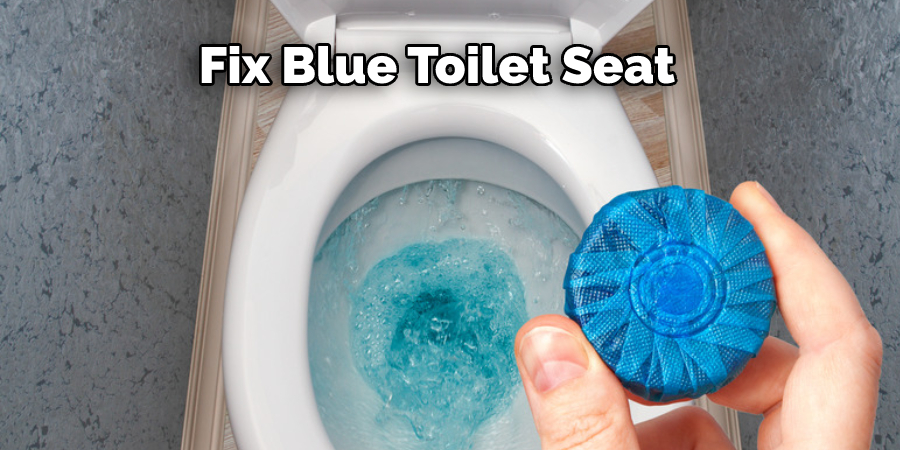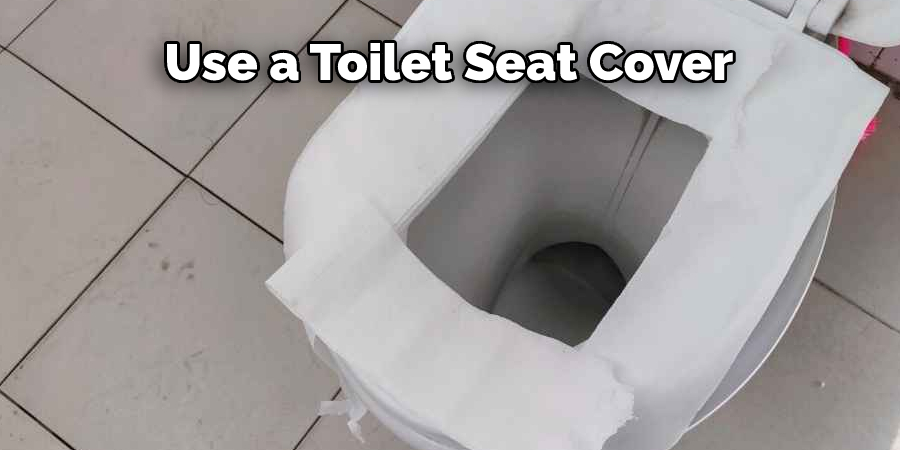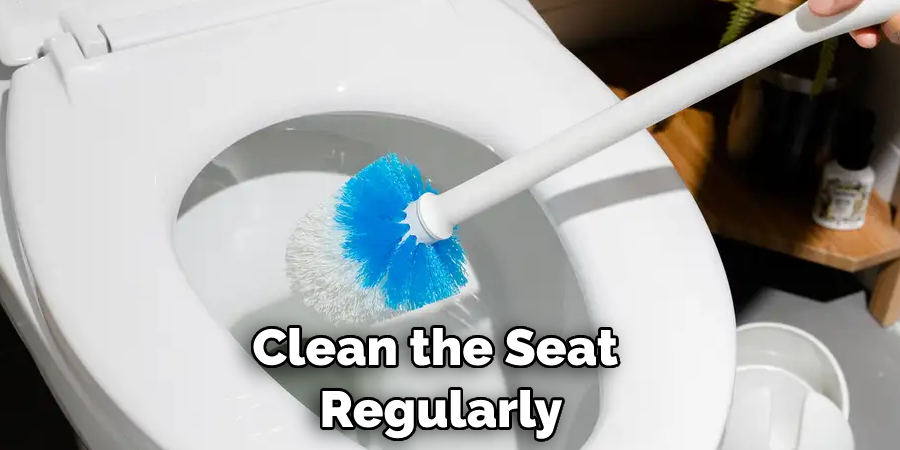It may be time for a fix if you have a blue toilet seat. Over time, the blue coating on the seat can start to wear off and reveal the white plastic surface underneath. This can leave your toilet looking unsightly and outdated. Fortunately, there are several ways to repair a blue toilet seat and make it look new. This blog post will discuss some of the most common ways how to fix blue toilet seat. We will also provide some tips on how to keep your seat looking its best in the future. So if your toilet seat requires some TLC, read on for some helpful tips.

What Causes the Blue Coating on Toilet Seats to Wear Off?
There are a few different factors that can cause the blue coating on toilet seats to wear off, including:
Age:
If your toilet seat is several years old, it may be time to consider replacing it with a new model. Over time, the blue coating on toilet seats can start to fade and wear away, especially if the seat is exposed to direct sunlight or other UV light sources. If this is your first time replacing your toilet seat, it is best to consult a professional.
Cleaning Products:
If you use certain cleaning products, the blue coating on toilet seats may fade or peel away. In addition, if you use harsh chemicals to clean your toilet, the seat may not be able to withstand the chemicals over time.
Temperature Changes:
Extreme temperature changes can cause the blue coating on toilet seats to fade or peel away. If you live in an area with drastic temperature changes, your seat may be more likely to suffer from this type of damage.
Physical Damage:
Physical damage to the toilet seat can also cause the blue coating to wear away. If you drop something heavy on the seat, for example, the force of the impact can cause the blue coating to chip or flake off. The surface of the seat may also become scratched, especially if you regularly use a metal toilet brush. Even if you’re careful with the brush, tiny particles of metal can become embedded in the coating. As you continue to scrub, these metal fragments will damage the blue coating more and more.
Things You’ll Need
- White plastic primer
- White plastic paint
- Fine-grit sandpaper
- Painter’s tape
- Foam brush
- Soft cloth
Some Effective Ways How to Fix Blue Toilet Seat:
1. Inspect the Seat
Before you begin any repairs, it is important to inspect the toilet seat for damage. If the seat is cracked or broken, it will need to be replaced. If the damage is limited to the blue coating, however, you may be able to repair the seat with one of the following methods.

2. Clean the Seat
Once you have determined that the seat is structurally sound, it is important to clean it thoroughly. Use mild soap and warm water to remove any dirt or debris from the surface of the seat. Be sure to rinse the seat well and dry it completely before proceeding to the next step. If the seat is very dirty, you may need to use a stronger cleaning product.
3. Remove the Old Coating
If the blue coating on your toilet seat is peeling or fading, you will need to remove it before applying a new coat. You can do this by sanding the seat with a fine-grit sandpaper. Be sure to sand evenly and avoid damaging the plastic surface underneath. Once you have removed the old coating, wipe the seat down with a damp cloth to remove any dust.
4. Apply Primer
Before you can paint the seat, you will need to apply a primer. This will help the paint to adhere to the seat and produce a more even finish. Use a foam brush to apply a thin layer of primer to the seat. Follow the manufacturer’s instructions and allow the primer to dry completely before proceeding. If you are using a spray primer, be sure to apply it in a well-ventilated area.
5. Apply Paint
Once the primer is dry, you can apply a new coat of paint to the toilet seat. Be sure to use a paint that is designed for use on toilet seats and that is labeled as being durable and chip-resistant. Also, be sure to apply the paint in thin, even coats to avoid drips and runs.

Use a small brush to get into any hard-to-reach areas, such as the hinge area. First, paint the underside of the seat and then let it dry completely before flipping it over to paint the top. Let the paint dry completely before using the toilet seat. Test the seat by opening and closing it a few times to make sure the paint is not still wet.
6. Inspect the Seat Again
Once the paint is dry, you will need to inspect the seat again for any damage. If you find any cracks or chips in the paint, you will need to sand them down and apply a new coat of paint. Be sure to let the seat dry entirely before using it.
7. Apply a Clear Coat
After the paint has dried, you may want to apply a clear coat to the seat. This will help to protect the paint and make it more durable. Apply a thin layer of clear coat to the seat. First, make sure that the seat is clean and dry. Apply the clear coat with a brush or a roller. Allow the clear coat to dry completely before using the toilet seat.
8. Replace the Toilet Seat
If the damage to your toilet seat is extensive, you may need to replace it. Be sure to measure the seat before you go shopping to find one that is the same size. Also, be sure to choose a seat that matches the style of your toilet.
How to Prevent Blue Toilet Seat Damage:
1. Use a Toilet Seat Cover
One way to prevent damage to your toilet seat is to use a seat cover. This will help to protect the seat from scratches, stains, and other damage. Be sure to choose a seat cover that is durable and easy to clean. For example, if you have a blue toilet seat, be sure to choose a seat cover that is the same color.
2. Avoid Harsh Chemicals
Harsh chemicals can damage the finish on your toilet seat. Be sure to use mild soaps and cleaners when cleaning the seat. Avoid using abrasive cleaners, as they can scratch the surface of the seat. If you must use a more substantial cleaning product, be sure to rinse the seat well and dry it entirely afterward.

3. Avoid Scratching the Seat
Be careful not to scratch the surface of the toilet seat. This can damage the finish and leave permanent marks. Be especially careful when cleaning the seat, as some cleaners can contain abrasive particles. Avoid using harsh scrubbing pads, as they can damage the seat. Instead, use a soft cloth or sponge.
4. Don’t Leave the Seat Wet
Avoid leaving the toilet seat wet, as this can damage the finish. Be sure to wipe the seat dry after each use. If the seat becomes wet, dry it as soon as possible. If you must leave the seat wet, use a mild soap or cleaner.
5. Don’t Sit on the Seat
Avoid sitting on the toilet seat, as this can cause the blue coloring to come off your clothes. If you sit on the seat, clean it off afterward, so the blue color doesn’t transfer to other surfaces.
6. Clean the Seat Regularly
Be sure to clean the toilet seat regularly to remove dirt, grime, and stains. Be sure to use mild soap and a soft cloth to avoid scratching the surface of the seat. You can also use a commercial cleaner specifically designed for cleaning toilet seats. If you have hard water, you may need to clean the seat more frequently to prevent mineral deposits from building up.
7. Apply a Protective Coat
If you have a blue toilet seat, you may want to apply a clear coat of protective sealant. This will help to protect the seat from scratches, stains, and other damage. Apply the sealant evenly and allow it to dry completely before using the toilet.

How Much Does It Cost to Fix a Blue Toilet Seat?
The cost of fixing a blue toilet seat will vary depending on the extent of the damage. If the seat is only lightly scratched, you may be able to fix it yourself with a few supplies from the hardware store. However, if the seat is severely damaged, you may need to replace it. The cost of replacing a toilet seat can range from $30 to $100. Usually, the cost of fixing a blue toilet seat will be less than replacing it.
Frequently Asked Questions
Why Would Toilet Seat Turn Blue?
There are a few reasons why toilet seats may turn blue. The most common reason is that the seat has been wet and left sitting in water for too long. This can cause mildew to form, which will turn the seat blue. Another common cause of blue toilet seats is urine leakage or improper disposal of human waste. Urine seeps through the porous plastic and lodges in between the fibers, causing them to darken over time.
Can a Toilet Seat Be Repainted?
Unfortunately, a toilet seat cannot be painted in the traditional sense. Toilet seats are typically made from plastic or other non-porous materials, which would make painting them difficult and potentially dangerous. There are a few companies that offer special paints or treatments that can be used on toilet seats, but these products are usually not user-friendly and may not be durable. If you’re looking to paint your toilet seat, you’ll likely have to look for a more specialized solution.
Do I Restore the Color of My Toilet Seat?
A common problem that homeowners face is dyeing their toilet seats. While this task may seem daunting, it’s actually quite simple to restore the color of your seat. All you need are a few household items and about 30 minutes.
To achieve the desired results, start by mixing one cup of white vinegar with two cups of water in a large container. Soak your stained toilet seat in the solution for about 30 minutes, then let it dry completely before using it again. Now you’re ready to enjoy color-free toilets!
Does Bleach Ruined Toilet Seat?
Everyone’s experience may vary. However, most experts agree that bleach should not be used on a regular basis on toilets because it can damage the porcelain and cause leaks. Additionally, bleaching products often contain harsh chemicals that can Claressen gout or other types of bacterial infections in the body. So while there are certain risks associated with using bleach on a toilet seat, it is ultimately up to you to decide if this is something you want to take the risk for.
What Happens When You Pour White Vinegar in Your Toilet Tank?
This is a question that has perplexed many people, and the answer is elusive. Some say that white vinegar can help clean your toilet, while others insist that it will cause irreversible damage. The truth is, there is simply no definitive answer – it’s up to you to experiment and find out what works best for you. Just be careful not to pour too much, or you might end up with a mess on your hands!
Conclusion
So there you have it, how to fix blue toilet seat. It’s not as hard as you may think, and now your throne will be restored to its former glory at no time. Follow the steps we listed above, and you’ll have that porcelain seat back to its original color in no time. Have you tried any of these methods? Let us know how they worked for you in the comments below.
You Can Chack It Out How to Fix Slow Filling Toilet
